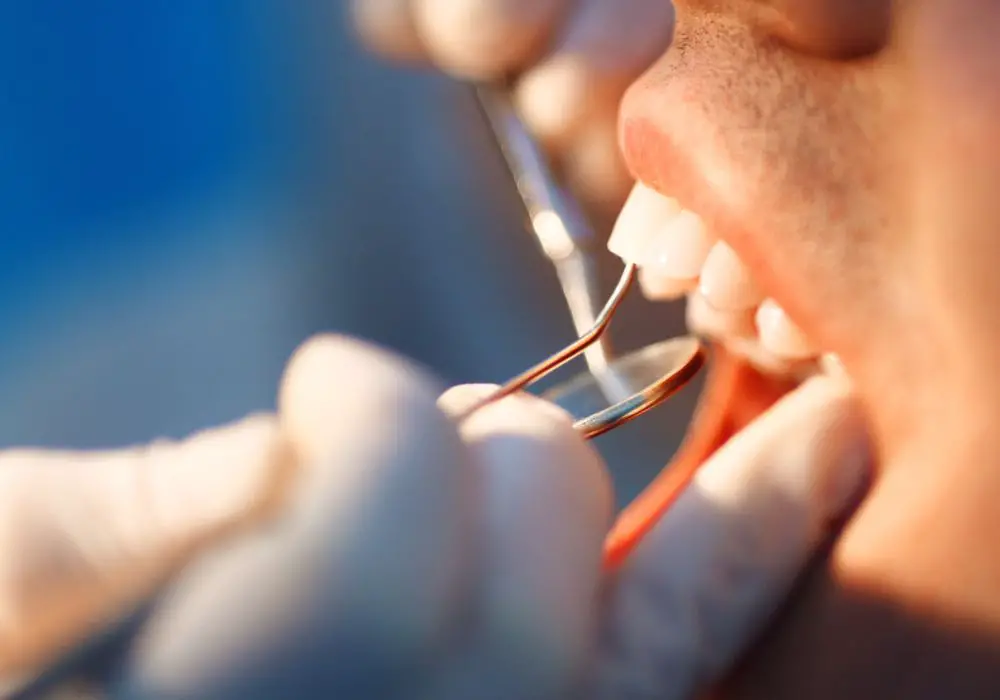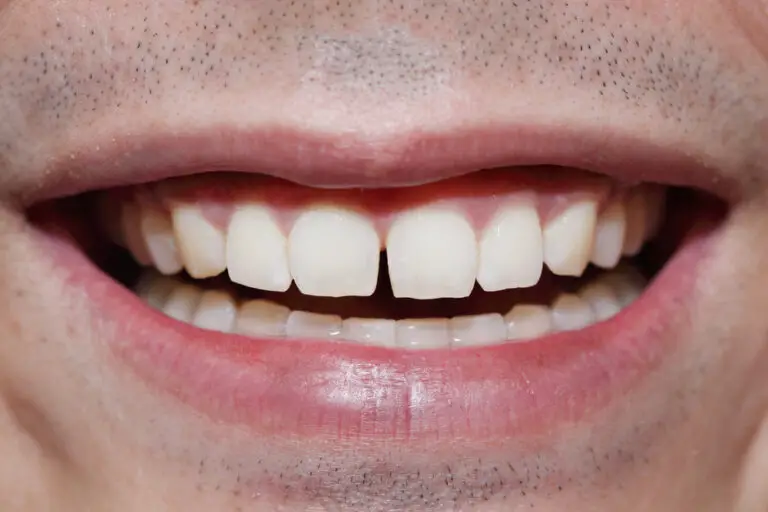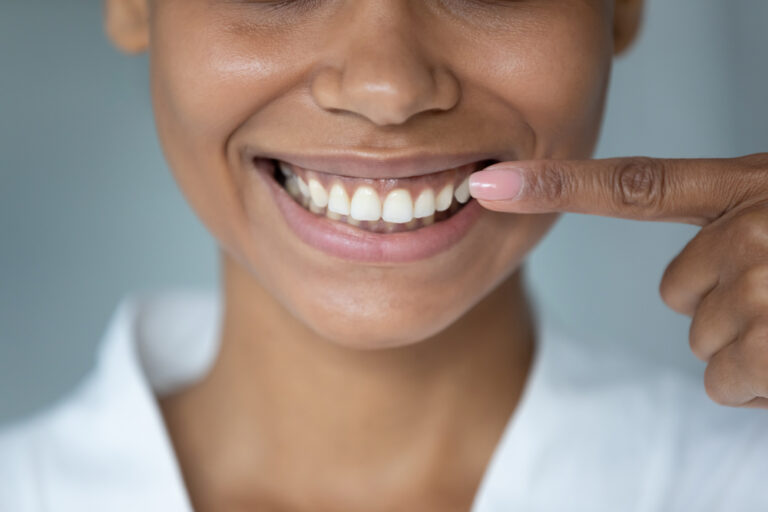If you have lost a tooth because of a dental extraction or injury, your dentist might suggest a dental flipper as a temporary fix. A flipper tooth is a non-invasive way to fill the gap left by a missing tooth or teeth. It is an acrylic partial denture that can help you speak normally, eat easier, and restore your smile.
Anyone considering a flipper tooth is likely to have many questions about it. What exactly is a flipper tooth? How long can you wear a dental flipper? And what the benefits of flipper teeth are common questions about them.
Continue reading to find answers to your questions about dental flippers.
What is a Dental Flipper?
A dental flipper is a removable retainer, which can be used to replace missing teeth. It will usually fit on the roof of the mouth or the lower jaw. The flipper denture will have one or several prosthetic teeth depending on the gap it is used to fill.
Dental flippers are not designed to be a permanent solution. Rather they are designed to be used while you wait for a permanent replacement tooth. It will be custom-made and fit the space left by the lost teeth perfectly to give you a flawless smile.
How is a Dental Flipper Made?
If you are getting a dental flipper, your dentist will take an impression of your teeth and mouth. They will then send the impression to a dental laboratory where they will create the flipper. Some dental practices may be able to create it in-house if they have a 3D printer.
The 3D printer or the laboratory will use the impression of your mouth to create a pink plastic base, which will support the prosthetic tooth or teeth. The tooth or teeth are made with acrylic resin.
When the dental flipper is ready, your dentist will call you back in to check the fit and make adjustments to it if required. How long it will take to get your dental flipper, depends on whether the dentist uses a lab or a 3D printer. Your dentist will be able to give you an estimate of the wait time.
How Long Can You Use a Dental Flipper?
When you get your flipper tooth, you need to wear it every day to maintain its function and fit. Most dentists will recommend that you wear it for at least twelve hours per day. This will help your mouth and natural teeth to adjust to the flipper and help it to stay in place better when you are eating or speaking.
Even though a dental flipper is meant to be a temporary replacement tooth, some people choose to wear them permanently rather than getting a dental implant. For some people they are a better option because they cost less than permanent dental implants, they are lightweight, and easy to adjust.
If you decided to wear a dental flipper in the long term, you must ensure you care for it properly. This will prevent damage or breakage to the flipper. Clean your dental flipper every day, just like you would your natural teeth, to remove food particles and plaque. This will help to protect your natural teeth and gums, too.
In addition to good oral hygiene such as brushing your natural teeth with toothpaste, you can help your dental flitter last better by avoiding sticky and hard foods. They could dislodge the fixture or damage it. You should also floss your teeth every day to remove residue you cannot remove with a toothbrush.
Can You Use Toothpaste to Clean a Dental Flipper?
You should not clean a dental flipper using toothpaste as it can damage it. Instead, remove the flipper before you brush your teeth and clean it separately. You can use dishwashing liquid or mild soap to clean your flipper using a soft-bristle toothbrush. Rinse the denture properly before reinserting it into your mouth.
How Long Will a Dental Flipper Last?
With proper maintenance, you may be able to wear a dental flipper for several years. However, since they have been designed as a temporary solution only, they will not last as long as permanent tooth replacements.
When a dental flipper wears out, you can either request another one or go for a dental implant. However, you need to consider the long-term costs of continuing with a dental flipper as it will require you to pay for a replacement more often.
Eating With a Dental Flipper
When you first get a dental flipper, it may feel strange or even difficult to eat. However, a correctly fitting dental flipper should make eating and chewing easier, not harder. Start by eating soft foods when you first get your dental flipper. Cut foods into smaller pieces than you normally would and chew slowly.
Try to chew with both sides of your mouth at the same time to avoid too much pressure on the flipper. It is best to avoid hard foods such as nuts or raw vegetables until your mouth has properly adjusted to the temporary denture. If your flipper is on the front teeth, do not use them to pull food off a fork.
Your flipper tooth can stain easily, so you might like to avoid consuming dark-colored food and beverages such as beets, coffee, and cranberry juice. If you consume food and drinks that can stain the teeth, ensure you clean them properly every day to prevent staining.

Talking With a Dental Flipper
Just like eating with a new dental flipper, talking with it might also take some time to get used to. Depending on the position of your dental flipper, you might find it moving when you first begin to speak with it in your mouth. Some people find it helpful to practice speaking in front of the mirror. As you get used to the flipper, talking should get easier.
Is It Safe to Sleep With a Dental Flipper in Place?
Dental flippers should be removed and cleaned thoroughly before you go to sleep. If worn all the time, the tissue underneath the flipper will be under constant pressure. This can result in gum recession and even bone deterioration, or fungal infection.
Therefore, you must take the dental flipper off and allow your gums to breathe overnight. The recommendation from dentists is that you remove the dental flipper for at least eight hours every night.
Dental Flipper Pros
Dental flippers are affordable, easy to use, and easy to maintain removable partial dentures. On average, a single-tooth dental flipper is around 25% cheaper than an implant. You will also need fewer visits to the dentist when getting a dental flipper compared to an implant.
Your dental flipper will be custom-made to fit your mouth perfectly and they generally have a quicker turnaround time than permanent partial dentures. They are also great for filling the gap while you are waiting for a permanent fixture. Dental flippers will also stabilize your existing teeth and stop them from moving toward the gap.
Dental Flipper Cons
There are also cons, such as that they can break easily if they are not properly looked after. The lightweight acrylic resin they are made with is more fragile than long-term solutions. Despite the custom-made fit, they can still feel bulky and uncomfortable in your mouth and some people find speaking and eating difficult while wearing a flipper.
If dental flippers are not cleaned properly they can cause oral infections, including tooth decay and gum disease. They can cause your gums to recede because they prevent saliva from flowing into the region they cover. Sometimes the dental flipper can loosen over time and it will no longer sit properly in its place.
Alternatives to Dental Flippers

If you are not sure a dental flipper is the right solution for you, there are other options you can consider. While they will be more expensive than a flipper, they will still be cheaper than permanent fixes. Ask your dentist to explain more about the alternatives to ensure you make the best decision for you.
Instead of a flipper tooth, you might prefer a fixed partial denture, which attaches to the adjacent teeth. However, your other teeth, roots, or dental implants need to be healthy for this option to work.
The other alternative is a snap-on-smile, which is a partial denture that covers your teeth and gums but not your palate. A snap-on smile is a non-invasive and painless option that is easily removable.
Conclusion
For many people, a custom flipper tooth is an easy temporary tooth replacement while they wait for a final restoration of their teeth. However, there are some people who choose to use them for longer-term because they are cheaper than dental implants.
If you have a dental flipper, ensure you remove it for at least the recommended eight hours per day and clean it thoroughly. Not looking after it properly can increase the risk of tooth decay and gingivitis. If you have any concerns about a dental flipper, ensure you address these with your dentist.






